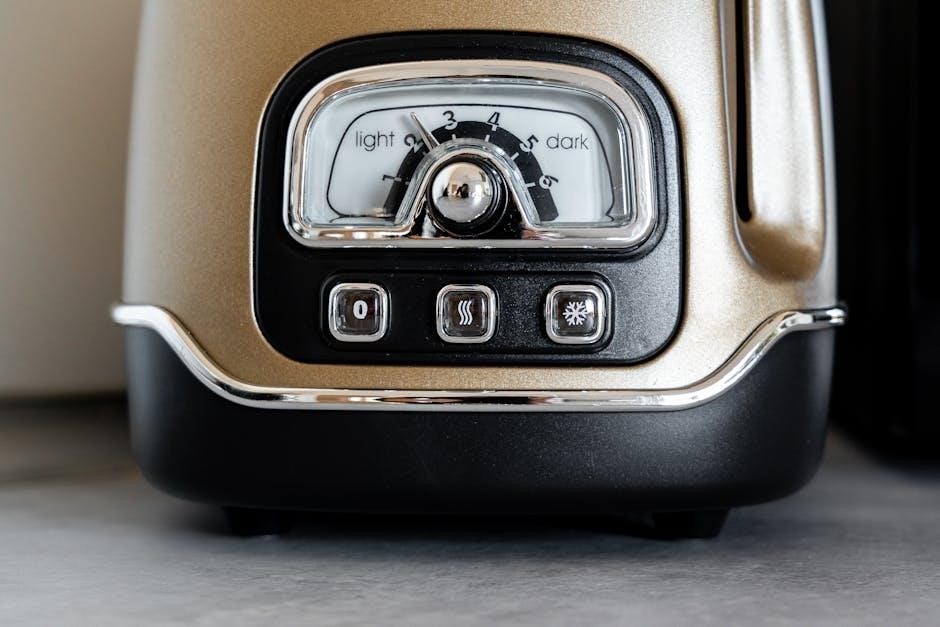Woods electrical timers offer reliable solutions for automating appliances, enhancing energy efficiency, and providing convenience. Available in mechanical and programmable models, they cater to diverse household needs.
1.1 Overview of Woods Timer Models
Woods offers a range of electrical timer models designed for various applications, including indoor and outdoor use. Models like the Woods 59104 and 59396 are popular for their durability and ease of use. The 50012 model is known for its programmable features, catering to users who need precise control over their appliances. These timers are available in mechanical and programmable options, ensuring flexibility for different household needs. Whether for lighting, pumps, or general appliance control, Woods timers provide reliable automation solutions, enhancing energy efficiency and convenience.
1.2 Importance of Using Electrical Timers
Electrical timers are essential for modern households, offering convenience, energy efficiency, and safety. They allow users to automate appliance operation, preventing overuse and reducing standby power consumption. This lowers utility bills and extends the lifespan of devices. Timers also enhance safety by controlling heating devices and outdoor lights, minimizing fire risks. Additionally, they provide peace of mind by ensuring appliances operate even when users are away. Woods electrical timers are particularly reliable, making them a valuable addition for any home seeking to optimize energy use and maintain comfort.

Types of Woods Electrical Timers
Woods offers mechanical, programmable, indoor, and outdoor timers. Models like 59104, 59396, and 50012 cater to diverse needs, ensuring reliable automation for appliances and lighting systems.
2.1 Mechanical vs. Programmable Timers
Mechanical timers use a dial with pins to set on/off times, offering simplicity for basic scheduling. Programmable timers provide digital controls, enabling precise customization of cycles. Mechanical timers are ideal for straightforward, repeated schedules, while programmable models suit dynamic needs with features like remote control. Both types operate on a 24-hour cycle, ensuring reliable automation. Mechanical timers are user-friendly for those preferring manual operation, whereas programmable timers cater to tech-savvy users seeking advanced control. This distinction helps users choose the right timer based on their specific requirements and preferences for appliance management.
2.2 Indoor vs. Outdoor Timers
Indoor timers are designed for household appliances, offering compact designs and straightforward installation. Outdoor timers, like the Woods 59396, are built to withstand weather conditions, featuring water-resistant enclosures. Both models provide reliable automation but differ in application. Indoor timers are ideal for lamps or electronics, while outdoor timers are suited for lighting, pumps, or irrigation systems. The choice between them depends on the environment and intended use, ensuring safe and efficient operation in their respective settings. Proper selection enhances functionality and durability, meeting specific user needs effectively.
2.3 Woods Timer Models (e.g., 59104, 59396, 50012)
Woods offers a range of timer models tailored to different needs. The 59104 is a 24-hour in-wall programmable timer, ideal for indoor use with heavy-duty appliances. The 59396 is designed for outdoor applications, featuring dual outlets and remote control functionality. The 50012 is a mechanical timer with 30-minute intervals, perfect for simple, precise scheduling. Each model provides distinct features, ensuring compatibility with various household or outdoor requirements, making them versatile solutions for automating electrical devices efficiently.

Installation and Wiring
Proper installation ensures safe and efficient timer operation. Follow step-by-step guides for wiring, ensuring all connections match the timer’s terminals and your household electrical system requirements.
3.1 Step-by-Step Installation Guide

To install a Woods timer, first, turn off the power supply at the circuit breaker. Mount the timer near the appliance or electrical outlet. Connect the live wire to the timer’s input terminal and the appliance’s wire to the output terminal. For programmable timers, follow the digital setup instructions, ensuring the current time is correctly set. Secure all wires properly and turn the power back on to test functionality. Always refer to the specific model’s manual for precise wiring diagrams and safety guidelines. Proper installation ensures reliable operation and safety.
3.2 Understanding Electrical Wiring Requirements
Woods timers require specific wiring configurations to ensure safe and proper operation. Most models are compatible with standard 120V or 240V circuits, depending on the appliance. Use 14-gauge wires for 120V installations and 12-gauge for higher amperage needs. For outdoor timers, ensure wires are rated for exterior use. Always match the timer’s terminal connections to the circuit’s live, neutral, and ground wires. Refer to the timer’s manual for exact wiring diagrams, as requirements may vary by model, such as the Woods 59104 or 59396. Proper wiring ensures reliable performance and prevents electrical hazards.
3.3 Indoor vs. Outdoor Wiring Considerations
Indoor and outdoor wiring for Woods timers differ in materials and safety requirements. Indoor timers typically use standard 14-gauge wires for 120V circuits, while outdoor setups may require 12-gauge wires for higher amperage. Outdoor wiring must be weather-resistant, with UV-rated jackets and proper grounding to prevent damage from moisture and extreme temperatures. Ensure outdoor timers are installed in sealed boxes or enclosures to protect against the elements. Always follow local electrical codes and manufacturer guidelines, such as those for the Woods 59104 or 59396 models, to ensure safe and reliable operation in any environment.

Setting Up the Timer
Setting up your Woods timer involves synchronizing the current time, programming on/off cycles, and utilizing the mechanical pin system for precise scheduling. Follow detailed instructions carefully.
4.1 How to Set the Current Time
To set the current time on your Woods electrical timer, locate the dial and align the arrow with the correct hour. For mechanical timers, turn the dial clockwise to match the current time. Ensure the timer is plugged in or has power. Some models may require setting the time manually using buttons or switches. Double-check the alignment of the arrow with the 12-hour or 24-hour marker, depending on your model. Once set, the timer will rotate automatically, ensuring accurate scheduling. Always verify the time accuracy before programming on/off cycles. This step is crucial for reliable operation.
4.2 Programming On/Off Cycles
Programming on/off cycles on your Woods timer involves setting specific times for your appliances to activate or deactivate. For mechanical timers, insert the pins at desired intervals to control the on/off periods. For programmable models, use the buttons to set start and end times. Ensure the timer is set to the correct current time before programming. Test the cycle by simulating the timer’s rotation or checking the display. If issues arise, verify that the timer is receiving power and that connections are secure. Proper programming ensures efficient and automated operation of your devices.
4.3 Using the Mechanical Pin System
The mechanical pin system on Woods timers allows you to set on/off cycles by inserting pins into the timer dial. Each pin represents a specific time interval. To use the system, first, set the current time by aligning the marker with the correct hour. Then, insert pins at the desired times for your appliance to turn on. The timer will automatically activate based on the pin positions. For multiple cycles, place additional pins at the corresponding times. Ensure the timer is powered and properly connected to your electrical system for accurate operation. This method provides a simple, reliable way to automate your appliances.
Advanced Features
Woods timers offer advanced features like remote control functionality, countdown options, and customizable settings for specific appliances, enhancing automation and energy management.
5.1 Remote Control Functionality
The remote control functionality in Woods timers allows users to manage their appliances effortlessly from a distance; This feature is particularly useful for outdoor timers, where direct access might be inconvenient. With the remote, you can turn devices on or off, adjust settings, and monitor operations without needing to be physically present. This adds a layer of convenience, especially for lighting systems or seasonal decorations, ensuring seamless control and enhancing overall user experience. The remote typically operates on radio frequencies, providing reliable connectivity within a specified range.
5.2 Countdown Timer Options
Woods timers offer countdown functionality, enabling users to set specific durations for their appliances. This feature is ideal for tasks requiring precise timing, such as holiday lights or irrigation systems. The countdown timer allows scheduling in intervals, ranging from minutes to hours, ensuring devices operate exactly as needed. Users can customize cycles to suit their preferences, enhancing automation and efficiency. Additionally, the countdown feature integrates seamlessly with remote controls, providing a comprehensive solution for managing electrical devices effortlessly. This option is particularly useful for outdoor applications, where timing accuracy is crucial for optimal performance.
5.3 Customizing Settings for Specific Appliances
Woods electrical timers allow users to tailor settings for specific appliances, ensuring optimal performance and energy efficiency. For instance, programmable models enable custom on/off cycles, ideal for devices like lights, pumps, or heaters. The timers can be adjusted to match the unique needs of each appliance, whether it’s a 30-minute interval for a coffee maker or extended cycles for outdoor lighting. This customization ensures devices operate precisely as intended, reducing energy waste and prolonging appliance lifespan. By adapting timer settings to individual appliances, users achieve greater control and convenience in their daily routines.

Troubleshooting Common Issues
Common issues with Woods timers include the timer not turning on or malfunctioning due to power supply problems or motor issues. Regular checks and resets often resolve these problems.
6.1 Timer Not Turning On
If your Woods timer fails to turn on, check the power supply first. Ensure the circuit breaker or fuse hasn’t tripped. Verify wiring connections for looseness or damage. Test the manual override switch to confirm functionality. If issues persist, inspect the timer’s internal mechanism or consider resetting it to default settings. In some cases, a faulty motor may require replacement. Always refer to the user manual for specific troubleshooting steps tailored to your model. Addressing these common issues promptly ensures reliable operation of your Woods electrical timer.
6.2 Issues with Power Supply
Power supply issues can prevent your Woods timer from functioning. Always ensure the timer is connected to a live outlet and that no circuit breakers or fuses are tripped. Check for any loose or damaged wiring, as this can disrupt power flow. If using a programmable timer, verify that the battery is installed correctly and has enough charge. For mechanical timers, ensure the dial moves freely without obstruction. If problems persist, consult the user manual or contact a licensed electrician to avoid further complications and ensure safe operation of your timer.
6.3 Motor Malfunction Solutions
If the motor of your Woods timer stops working, first ensure it is receiving proper power. Verify that the circuit breaker hasn’t tripped and that all connections are secure. For mechanical timers, check if the dial is moving freely without obstruction. If the issue persists, inspect for dust or debris that may hinder motor operation. Lightly cleaning or lubricating internal components can sometimes resolve the problem. If the motor still fails to function, consider replacing it or upgrading to a new timer. Always refer to the manufacturer’s guidelines for repair or replacement options.

Safety and Maintenance
Ensure optimal performance and longevity by following essential safety and maintenance guidelines. Always follow installation instructions to avoid electrical hazards. Regularly inspect and clean timers to prevent dust buildup. Avoid overloading circuits to prevent damage. Check for worn-out parts and replace them promptly.

7.1 Safety Precautions for Electrical Timers
To ensure safe operation, always follow safety guidelines when handling Woods electrical timers. Avoid exposing timers to water or moisture, as this can cause electrical shocks or malfunctions. Never overload the timer with more power than it’s rated for, as this may lead to overheating or fire hazards. When installing, ensure all connections are secure and meets local electrical codes. Keep timers out of reach of children to prevent accidental tampering. Regularly inspect the device for any signs of damage or wear, and replace immediately if any issues are found.

7.2 Regular Maintenance Tips
To ensure optimal performance, regular maintenance of Woods electrical timers is essential. Dust the timer periodically to prevent buildup that may interfere with mechanical parts. Clean the device with a soft cloth, avoiding harsh chemicals. Inspect the power cord for any signs of fraying or damage. Ensure all connections are secure and free from corrosion. Check the timer’s accuracy by synchronizing it with a reliable time source. Replace batteries in programmable models as needed to maintain functionality. Regular maintenance helps prevent malfunctions, ensuring reliable operation and prolonging the timer’s lifespan.
7;3 Replacing or Upgrading Your Timer
When replacing or upgrading your Woods electrical timer, start by disconnecting the power supply for safety. Remove the old timer and note the wiring connections for accurate installation. For upgraded models, refer to the manufacturer’s instructions to ensure compatibility with your electrical system. Install the new timer by securing it to the wall or outlet, then reconnect the wires as noted. Program the new timer according to your needs, testing its operation to confirm functionality. Upgrading can provide advanced features like remote control or customizable settings, enhancing convenience and efficiency. Always follow safety guidelines during the process.

Energy Efficiency and Benefits
Woods electrical timers promote energy efficiency by automating appliance operation, reducing standby power consumption, and minimizing waste. They offer environmental benefits and long-term cost savings through optimized energy use.
8.1 How Timers Reduce Energy Consumption
Woods electrical timers reduce energy consumption by automating the operation of appliances, ensuring they only run when needed. By setting specific ON/OFF cycles, timers prevent standby power waste and overuse of devices. Programmable models allow precise scheduling, optimizing energy usage based on daily routines. This consistent management of power consumption leads to noticeable reductions in energy bills and a smaller carbon footprint, supporting eco-friendly practices.
Using Woods timers promotes environmental sustainability by reducing unnecessary energy consumption. By automating appliance operation, timers minimize standby power and lower overall energy use. This reduction in energy demand decreases greenhouse gas emissions, contributing to a cleaner environment. Additionally, timers encourage efficient resource management, aligning with eco-conscious practices. Over time, these energy-saving habits help preserve natural resources and support global efforts to combat climate change. Timers are a simple yet impactful tool for making a positive environmental impact. Proper use of Woods timers significantly reduces energy waste, leading to noticeable cost savings. By automating appliance operation, timers prevent unnecessary power consumption when devices are not in use. This consistent energy management lowers utility bills and extends appliance lifespan. Users can avoid standby power consumption and optimize energy usage for lighting, heating, and other systems. Over time, these savings accumulate, making timers a practical investment for homeowners. The ability to customize on/off cycles ensures resources are used efficiently, directly translating to financial benefits and reduced energy waste. Woods electrical timers are designed to simplify household automation, offering key features like programmable scheduling, remote control, and customizable settings. Their energy-efficient design helps reduce power consumption, lowering utility bills and promoting eco-friendly practices. With models suitable for both indoor and outdoor use, these timers provide versatility and reliability. Advanced options such as countdown functionality and mechanical pin systems allow users to tailor operations to specific appliance needs. Easy installation and user-friendly interfaces make them accessible for all skill levels, ensuring optimal performance and convenience. Regular maintenance ensures longevity and consistent functionality. To maximize the benefits of your Woods electrical timer, ensure regular checks and maintenance. Replace worn-out pins or parts promptly to avoid malfunctions. Always program timers according to the specific needs of your appliances to optimize energy savings. Keep the user manual handy for quick troubleshooting. For outdoor timers, ensure proper weatherproofing and secure installations; Follow safety guidelines to prevent electrical hazards and extend the timer’s lifespan. By adhering to these tips, you can enjoy efficient, reliable, and safe operation of your Woods electrical timer for years to come.8.2 Environmental Benefits of Using Timers
8.3 Cost Savings with Proper Timer Usage
Woods electrical timers are versatile, reliable, and energy-efficient solutions for automating household appliances. Their ease of use and customizable features make them ideal for various needs, ensuring convenience and cost savings.9.1 Summary of Key Features and Benefits
9.2 Final Tips for Optimal Use